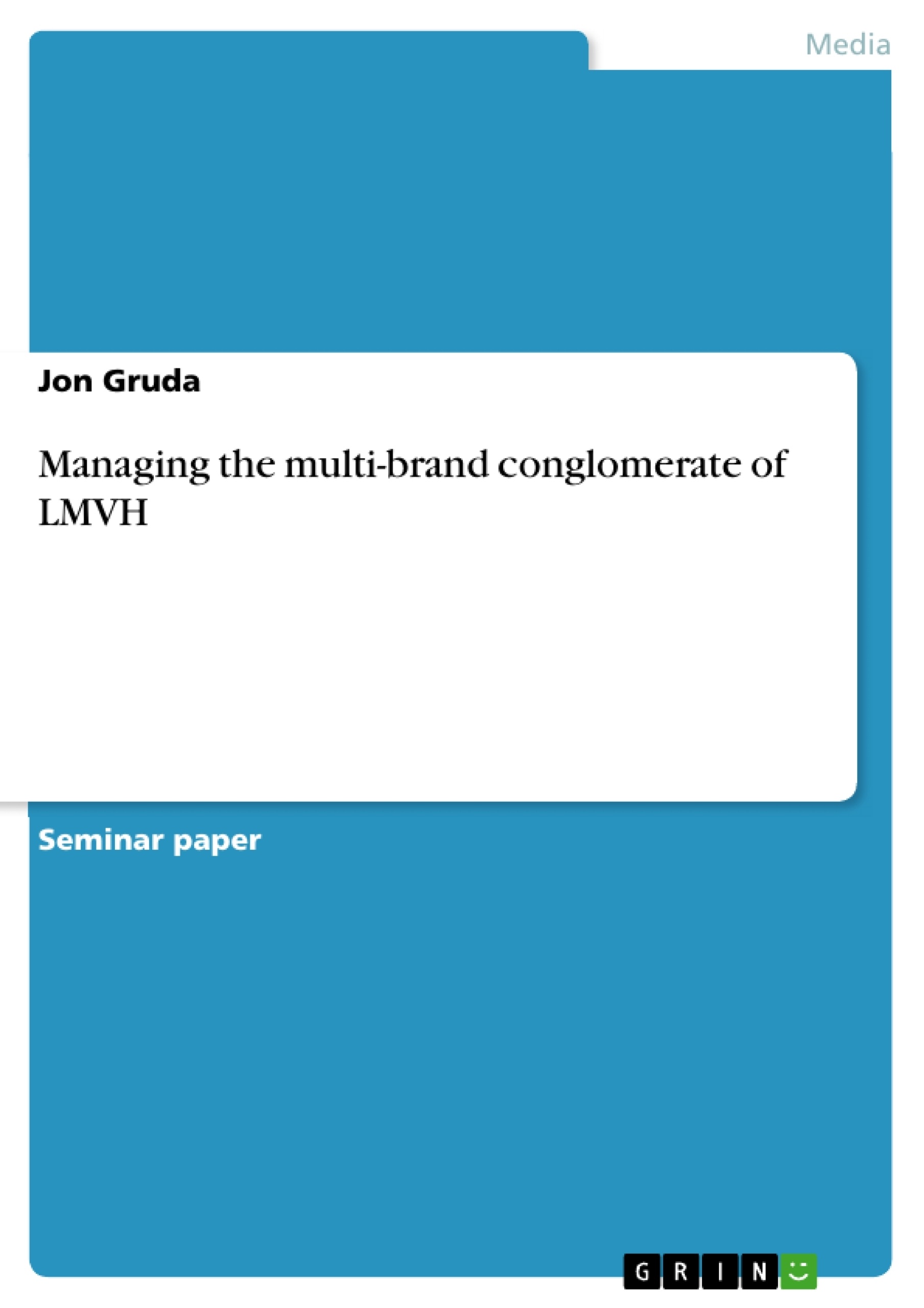LVMH is a French based top luxury brand, which has established its name successfully in the market and represents one of the biggest luxury conglomerates in the world. With over 2,314 stores worldwide, employing over 77,087 employees, of whom 74% are employed abroad, LVMH has quite the firm stand in the market. LVMH has throughout the years of its establishment applied the multi-brand strategy, which is thoroughly discussed in this paper.
Besides an analysis of the multi-brand strategy, its strengths and weaknesses, while assessing future opportunities and threats for LVMH, this paper also gives an overview of the structure of LVMH. The paper also comprises an overview of LVMH’s applied international strategy model, while keeping in mind possible effects of globalization and innovation dependence on the firm.
Inhaltsverzeichnis (Table of Contents)
- 1 Introduction
- 2 Global Structure of LVMH
- 2.1 Multi-Business Global Production Model
- 3 Multi-Brand Strategy
- 4 International Strategy
- 4.1 Strategy Type
- 4.2 Impact of Globalization
- 4.3 Innovation Dependence
- 4.3.1 Strategy
- 4.3.2 Structure
- 4.3.3 Processes
- 4.3.4 Skills
- 5 Conclusion
- 6 References
Zielsetzung und Themenschwerpunkte (Objectives and Key Themes)
This paper analyzes LVMH's success as a luxury conglomerate. It aims to examine LVMH's organizational structure, its multi-brand strategy, and its international strategy, considering the impacts of globalization and innovation dependence. The analysis explores how LVMH manages its diverse portfolio of brands and navigates the complexities of the global luxury market.
- LVMH's organizational structure and its multi-business global production model.
- The advantages and disadvantages of LVMH's multi-brand strategy.
- The impact of globalization on LVMH's international strategy.
- LVMH's approach to innovation and its dependence on it.
- The importance of local responsiveness in LVMH's operations.
Zusammenfassung der Kapitel (Chapter Summaries)
Chapter 1: Introduction provides an overview of LVMH, highlighting its size, global reach, and the use of a multi-brand strategy. It outlines the paper's objectives, which include analyzing the multi-brand strategy, the organizational structure, and the international strategy model.
Chapter 2: Global Structure of LVMH discusses the complexities of LVMH's structure. It focuses on the multi-business global production model, explaining how different business divisions operate with limited interaction. The chapter also addresses the importance of local responsiveness and how LVMH addresses potential limitations of this model.
Chapter 3: Multi-Brand Strategy defines and analyzes LVMH's multi-brand strategy, illustrating its implementation through various acquisitions across different sectors.
Chapter 4: International Strategy explores LVMH's international strategy, including its type and the influence of globalization and innovation dependence. This section delves into the strategic, structural, processual, and skills-related aspects of managing an international luxury conglomerate.
Schlüsselwörter (Keywords)
LVMH, luxury brands, multi-brand strategy, global production model, international strategy, globalization, innovation dependence, local responsiveness, organizational structure, market research.
- Quote paper
- MSc. Jon Gruda (Author), 2009, Managing the multi-brand conglomerate of LMVH , Munich, GRIN Verlag, https://www.grin.com/document/183134



